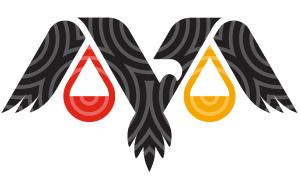Delivered by George Selvanera, Acting CEO, on Thursday 21 October 2021
CHECK AGAINST DELIVERY
Thank you very much Chair. First let me acknowledge that I am coming to you today from our offices in Melbourne on the unceded lands of the Wurundjeri people. I pay respect to their elders, past, present and emerging and of that of all the Aboriginal nations here in Victoria.
As you know, the Aboriginal community established VALS for the Aboriginal community nearly 50 years ago. Our initial focus was the gross over-representation of Aboriginal people in custody and ensuring culturally safe legal assistance and support to help Aboriginal people navigate the criminal justice system in Victoria. Services have expanded significantly since then, although demand for our services far outstrips our available resources. At the same time, our assistance in criminal law matters continues to be as important as ever, because unfortunately the Victorian criminal justice system does not work for Aboriginal and Torres Strait Islander people.
We welcome the Committee Inquiry and the opportunity it affords to recommend changes that address the unprecedented and costly expansion of the incarcerated population and the over-representation of Aboriginal people of all ages and genders at each stage of the criminal justice system. For the Committee, this is a chance to make recommendations for improving trust and the confidence of Aboriginal people in the criminal justice system. That requires 5 main actions:
- Working with Aboriginal people and organisations to decide how a criminal justice system works for Aboriginal people. And I use the word decide deliberately. Self determination is not simply consultation with Aboriginal people, but rather it is Aboriginal people deciding what matters in the way and what of reform.
- Recognising that our criminal justice system is rooted in Australia’s violent colonial history. When you consider that much of our criminal justice system was established and evolved during an era that nearly everyone concedes was endemic with racism from dispossessing Aboriginal people from their land and criminalising trespass, removing children from families in the stolen generations and where out-of-home care then and now remains one of the single most important markers of whether someone will interact with police and prisons and so on— it is pretty intuitive to accept that intergenerational trauma and disadvantage flows from this and that Aboriginal people are over-represented at every stage of it. Systemic racism means that we have systems and institutions that produce racially disparate outcomes, regardless of the intentions of the people who work within them. What we need is Aboriginal people deciding how to craft a criminal justice system that meets its objectives of prevention, deterrence and offender accountability.
- It is about recognising that we need to invest in prevention. As the Corrections Commissioner and the Victoria Police said at the Royal Commission into Mental Health identified underfunding of community services is a key driver of growing police contacts and incarceration numbers. This failure is hugely costly, literally billions of dollars annually, but it is also expecting too much of prisons and police. They are high cost residual services, not low cost prevention services.
- It is about embedding deterrence of people at each step in the pathway through the criminal justice system, not spider web like trap people deeper within it.
When a 10-13 year old engages in offending behaviour this should trigger an immediate examination of what is happening with that child and family and what early help can be provided in a culturally safe and relevant way to prevent and deter that child from entering criminal justice processes. Yet in Victoria, that child can be criminalised, removed from their family and placed in youth detention, increasing their likelihood of future offending and incarceration. - We need evidence based policy making and much more transparency about how decisions are made. For instance, public health approaches to public health problems, such as addiction. Similarly, the broken bail system now means that the main reason Aboriginal people are in custody is because they are on remand, mostly for alleged low-level offences which in instances where the person is found guilty, almost never result in imprisonment.
To make matters worse this has disproportionately impacted Aboriginal women, 80% of whom are mums who are then separated from their children. Those children being at risk of being placed in out of home care, a staging post for more interaction with police and criminal justice.
As we say in our written submission, given the plethora of inquiries and royal commissions into the CJS, it seems safe to say that we have reached a consensus. That is, that the current system and approaches are not working. We need serious reform that respects Aboriginal self determination, is free from racism and discrimination. Is grounded in evidence and is accountable to the community it serves. Thank you.

